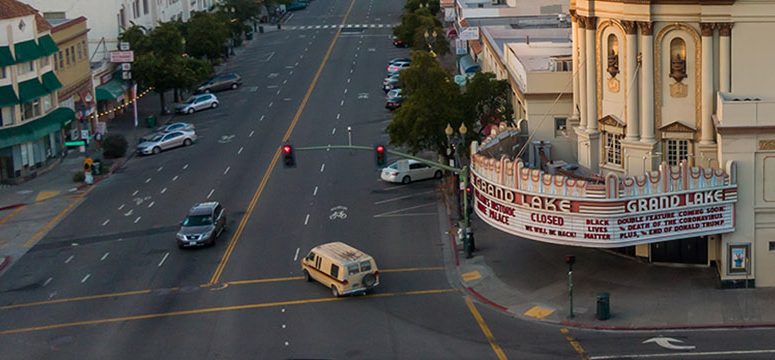Sometimes we need a study to tell us what we all know, because no matter how glaring the evidence — smoking is bad for you, the Earth is getting warmer — you’ll have your detractors.
Take Cleveland. There are actually people, people who should know better, who go around saying things like, “Low density is Cleveland’s competitive advantage.” As if businesses and residents from Chicago, New York and San Francisco were lining up along the Ohio Turnpike to get into Cleveland.
A timely study by the Federal Reserve Bank of Cleveland shows that notion to be the opposite of true. Comparing older metros like Cleveland and Detroit to places like Atlanta and Chicago, researchers find, areas that maintained the healthiest central city performed the best.
Network blogger Kaid Benfield at the Natural Resources Defense Council’s Switchboard blogsays the findings should be instructive to all regions, especially those in the rust belt:
The study includes density maps showing how Atlanta and Chicago maintained their core densities between 1980 and 2010, while Detroit and Cleveland lost theirs. All four regions show suburban and exurban growth, though to a lesser degree in the shrinking regions compared with the growing ones. (Atlanta’s map shows sprawl that is, not to put too fine a point on it, just off-the-charts ridiculous.)
Indeed, in metro areas that grew in population (e.g., Sun Belt regions and stronger older regions such as Boston, Chicago, and Philadelphia), the greatest growth from 2000 to 2010 took place not just near the center but in downtown census tracts. The comeback of America’s downtowns and adjoining older neighborhoods is real. But, in those metros that lost population (e.g., Detroit, Cleveland, Buffalo), losses remained greatest near the cores. A sign of encouragement for the shrinking regions, however, may be that their downtowns lost significantly less population after 2000 than did census tracts between three and fifteen miles from the central business district.
So: regardless of what’s happening in the suburbs, holding on to a city’s core population appears important to overall regional success. Unfortunately, finding policy mechanisms to promote that outcome in the US, with our highly decentralized and fragmented patterns of municipal governance, remains a formidable challenge and well beyond the scope of a brief blog post. (There’s reason for hope in a few places, such as California.) But, even in the US, we have some regional and state mechanisms, from metropolitan planning organizations that allocate transportation spending to commissions that regulate utilities. If properly aligned, those could begin to make a difference.
Elsewhere on the Network today: Cap’n Transit praises some of the world’s narrowest streets. Urban Indy reports on a new bill for a transit referendum that could change the state’s transportation dynamic. And Los Alamos Bikes promotes a new law that would increase penalties for careless drivers in New Mexico.






